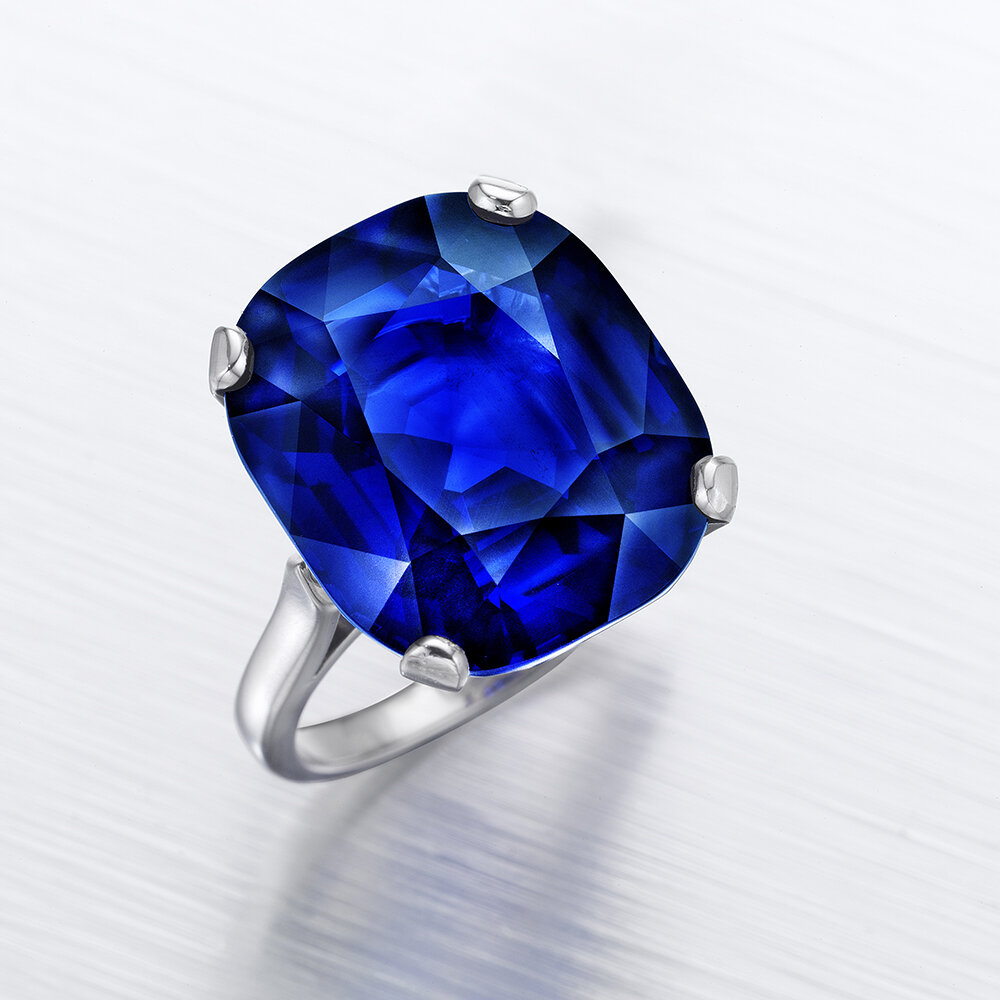Article by Sumeet Chordia, G.G.
If you are shopping for natural sapphires, you will come across stones that are either unheated (no heat) or enhanced (i.e., heat-treated). There are other methods of treatment performed on sapphires, however, this article compares unheated sapphires with heated sapphires as it is the most prevalent treatment method.
Heat treatment application on sapphires dates back centuries and is widely accepted in the global gemstone and jewelry market. The treatment is effective and stable; additionally, it permits an affordable alternative to unheated natural sapphires, which are more expensive. While heated sapphires are readily available at brick-and-mortar or online jewelry retailers, natural unheated sapphires are difficult to procure, admired for their legends, and coveted for their appearance. Hence, they are more likely to hold value and are often used in iconic and uber-fine jewelry.
GEMOLOGY 101: SAPPHIRE
Sapphires are a variety of the mineral Corundum, which is chemically Aluminum Oxide. Other members of the corundum family include ruby, padparadscha (orangy-pink), pink sapphire, yellow sapphire, star sapphire, and many other hues of sapphires. But regardless of their color, the foundational chemical composition of all these gemstones is the same.
What gives sapphires their blue color? Trace Elements. The blue color in sapphires is attributed to the type and amount of Titanium and Iron present in the crystal. The right balance of Titanium, Iron, and Aluminum Oxide will result in a beautiful blue sapphire color.
Why do some sapphires exhibit low saturation of color? Stones that do not have a sufficient amount, type, and combination of trace elements throughout the stone will not have an intense saturation of blue. These sapphires are ideal candidates to undergo heat treatment for color improvement.
ABOUT NATURAL HEATED SAPPHIRES
A modern custom-made sapphire engagement ring set with a beautiful and velvety natural, heated sapphire, Made in England. © RAF Jewels
Why heat sapphires? To improve the color, offer various sizes, get a higher return on investment, and offer customers an affordable choice. An individual or company in the early stages of the supply chain felt that their unearthed, pre-heated stone lacked a desirable color. They can either leave the stone as-is or mark it for heat treatment. If they were to leave the stone in its original state, they would not reap a financial gain. But if they improve the color via heat treatment, the stone becomes more sellable, and they can get a better return on their investment. These stones are a great lower-cost alternative to natural, unheated sapphires for the consumer.
After heating a sapphire, is the color permanent? Yes, and this is a boon for heated sapphires. The color of a heat-treated sapphire will remain permanent and will not change or fade unless the stone undergoes a secondary treatment. This is the reason why most retailers accept heat treatment on sapphires. Some high-end jewelry houses still prefer to offer only natural, unheated sapphires, but they would happily use a heated sapphire if their client requested it.
Are all heated sapphires the same? No, and this is important. Heating only improves the color of a gemstone, but it is not an equalizer. The improved color will vary among stones, and all other quality attributes remain unique to each stone. Additionally, some stones go through multiple enhancements to improve their appearance and hide bothersome defects.
Are heated sapphires undesirable? No, the critical factors for a desirable gemstone are a beautiful color, eye-clean clarity, well-cut, and pleasant crystal. However, heated sapphires lack the natural and exclusivity appeal of unheated sapphires.
ABOUT NATURAL UNHEATED (NO-HEAT) SAPPHIRES
A vintage demi-parure with natural, no-heat sapphire and diamonds crafted by the house of Vourakis in Greece. © RAF Jewels
By appearance, is there a difference between natural and heat-treated sapphires? Yes, but likely to a trained eye. Generally speaking, natural no-heat sapphires will have a softer luster and smoother surface appeal. Heated sapphires display a glass-like surface that feels hard and unnatural.
Are natural, no-heat sapphires rarer and more valuable than heated sapphires? Yes, sapphires that have not undergone any color or clarity enhancement along the supply chain (mine to retail) are rare and, therefore, more valuable than heated sapphires that are abundant in the market.
Are all unheated sapphires the same? No. Just like individuals, each unheated sapphire is unique and the sum of its attributes: color, clarity, cut, crystal, carat weight, and geographic origin.
Why do unheated, gem-quality sapphires command high prices? Fine or gem-quality blue sapphires are rare and sought-after by collectors. For a sapphire to be considered gem-quality, it must exhibit the following:
A beautiful combination of hue, tone, and saturation of blue (Color)
Insignificant to no eye-visible inclusions (Clarity)
A high degree of brilliance to reflect the color (Cut)
A high degree of luster for the movement of light in the stone (Crystal)
A moderate to a significant size (Carat Weight)
No man-made treatments to enhance/improve the stone’s color or clarity (Enhancements)
In short, there must be a strong balance and combination of nature's ingredients and a cutter's artistry.
SIGNIFICANCE OF GEMOLOGICAL REPORTS OR CERTIFICATES
A sample gemological report of a natural sapphire. © American Gemological Laboratories (AGL)
How will I know if a sapphire is natural (unheated) or heated? Request a third-party gemological certificate. This scientific assessment can only be done by a highly experienced gemologist and more convincingly by a reputable laboratory such as GIA, AGL, Gübelin, SSEF, or GRS that have years of research data, high-tech equipment, and experienced gemologists analyzing their findings. Appraisals are insufficient because they assess value.
Should I always request a certificate? It depends. If you are making a significant investment, you should request a certificate from a reputable gemological laboratory. In extremely high-value gemstones, we recommend multiple certificates. For small gems, the cost of a certificate may exceed the total purchase price. In such cases, it may not be advisable to spend the money on third-party certification and rely on the jeweler’s reputation and transparency.
THE INVESTMENT VIEW
Which is a better investment? Unheated Sapphires. Sapphires with vivid/royal blue color and fine clarity, which have not undergone any treatment, are the ideal investment. They are becoming increasingly rarer, and the demand remains high in 2023. Additionally, many signed, vintage, and antique pieces by famous houses are set with natural, unheated sapphires. While these pieces hold value due to their history, provenance, originality, design, period, etc., the appeal of unheated sapphires is precious and attractive.
Whereas fine-quality natural unheated sapphires are becoming increasingly rare and have shown a substantial increase in market value over time, fine-quality heated sapphires have shown a marginal increase in value. Regardless, a fine-quality natural sapphire, whether unheated or heated, is a good niche.
If you have further questions, please write to us - we would be happy to share our knowledge.
Next Recommended Reading: Gemstone Origin: Series 1: Introduction or 10 Steps to Buy a Natural Sapphire
To view our collection of natural sapphires, click here; to view our collection of sapphire engagement rings, click here.
Updated: February 21, 2023
Originally Published: May 20, 2016





